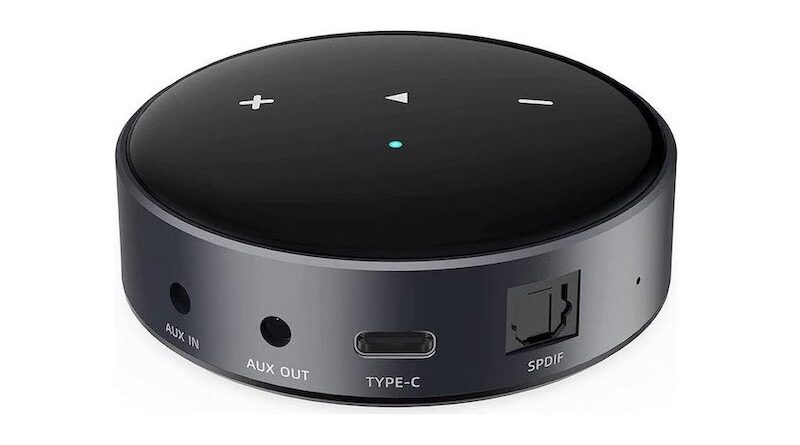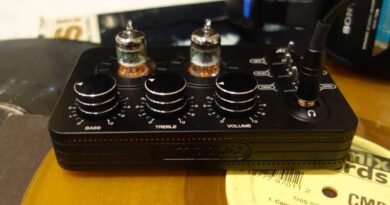WiiM Mini AirPlay 2 Wireless Hi-Res Audio Streamer Review – There’s a New Sheriff in Town and His Name is Reggie Hammond
The Google Chromecast Audio was inarguably one of the great audio bargains of all time at its original $30 SRP, but since being discontinued by Google it has crept up to >$80, which caused me to look at more current, better-featured streamers.
The hockey-puck sized WiiM Mini (SRP $100, though sometimes discounted to $70-80) packs a lot of accessories in the box, including good-quality charging, optical and analog audio cables. The WiiM app accesses music services and allows you to select Bluetooth, Wifi or line-in modes and to set output level, sample rate and bit depth (it also has multiroom functionality, 22 EQ presets and an “adaptive EQ” function, which adjusts frequency using music genre and other tags in the audio content).
The app is well-conceived, if initially a bit tricky to navigate; once I set it up I found it easier to use Spotify Connect or Tidal Connect to control music search and playback functions. Once connected, I experienced no pauses or dropouts.
The Mini works fine in Bluetooth mode, with clean, if compressed, sound but limited high-end extension and definition. Predictably, the Mini sounds much richer and more dynamic as a Wifi streamer, where it can output gapless, bitperfect 24/192 through the SPDIF out. I first tested its analog out in Wifi—the onboard Burr-Brown PCM5121 DAC sounded significantly bassier, more energetic and detailed than the analog out in the Chromecast Audio it replaced.
Comparison to the analog out of my buddy’s Bluesound Node 2i was a closer race—the 5x pricier Bluesound had a warmer, more organic tone and a slightly more expansive, open soundstage, while the brighter Mini showed a fuller midrange, more perceived microdetail and sparkle, albeit with some highend digital glare.
I thought the Bluesound sounded more lifelike on acoustic fare while the WiiM was better-resolving and clearer on more complex material, though the differences were by no means significant or cost-effective. I do note that many reviewers have maligned the onboard DAC of the Bluesound and that the guy at audiosciencereview said the analog out of the Mini was “just okay”; I’d be content with either for less critical listening.
It was clear, however, that the Mini sounded best through its digital out–when connected to my SMSL SU-9, notes were weightier, with better instrument separation, more bass impact and significantly more high-end extension—percussion and piano sounded more smoothed over and less resolving through the analog out. There’s an overall physicality to the Mini—drums have a lot of punch and male vocals sound slightly chesty, but very clear and forward.
The Bluesound connected to the same DAC again sounded softer-edged and a tiny bit warmer, with perhaps a bit less sharpness/brilliance than the Mini, but again there wasn’t a ton of difference. FWIW, the Chromecast Audio through the digital out sounded appreciably flatter and less punchy than the Mini or the Bluesound; low end in particular was more rounded and reserved—the Chromecast’s limitations were readily apparent when playing “ultra-HD” and higher rez files. Transports do make a difference, kids.
I’m not one of those dimwits proclaiming that “bits are bits” or that all digital sources sound alike, and I trust that those folks dropping big bucks on Auralic or Lumin streamers are getting their money’s worth. For me, especially considering I listen to a lot of lower-rez Spotify at moderate volumes, it’s tough to justify buying more than the Mini. It’s a very good piece which is something of a breakthrough at this price point.
Non-disclaimer: bought three of ‘em myself.







